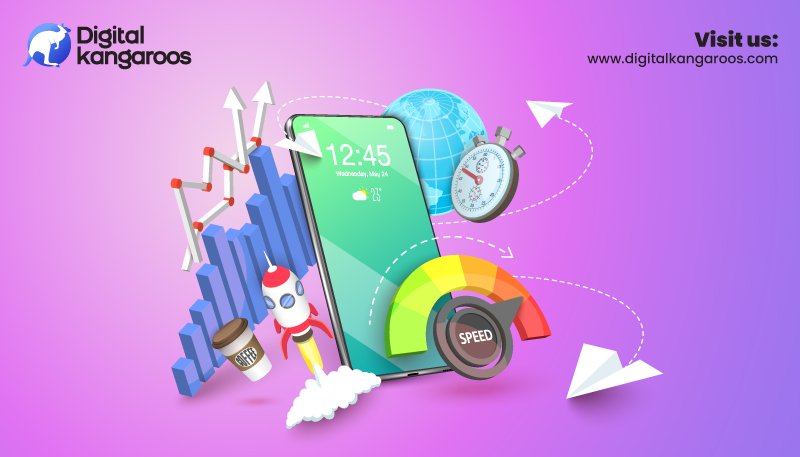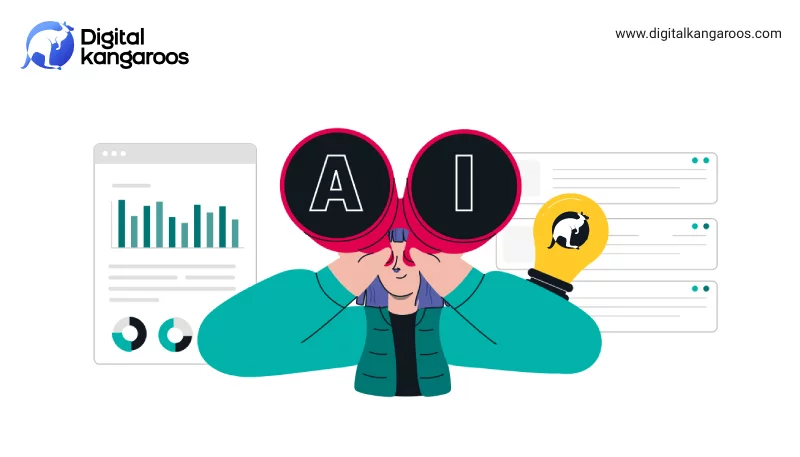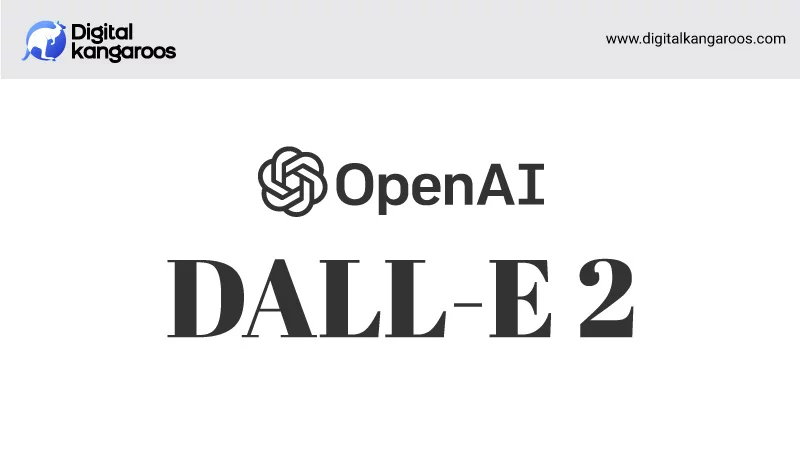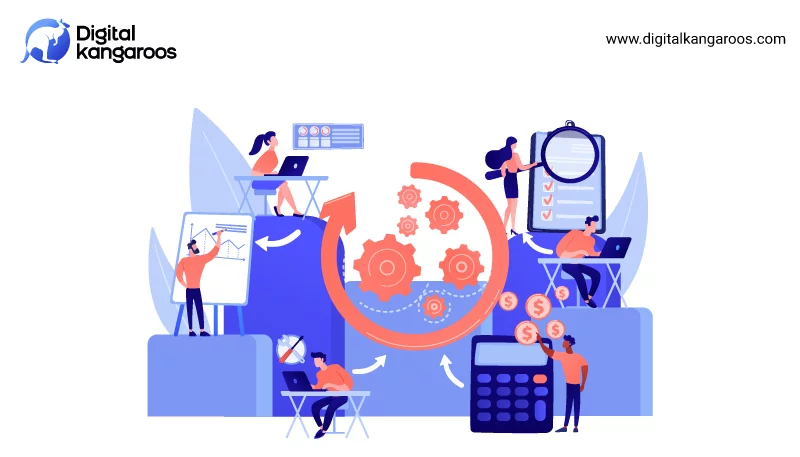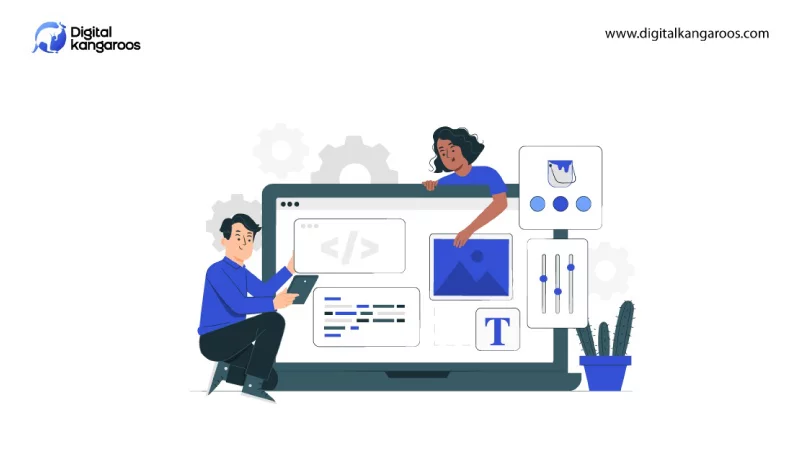In the ever-evolving landscape of web design, custom illustrations are proving to be a game-changer for businesses looking to make...
In the ever-evolving landscape of web design, custom illustrations are proving to be a game-changer for businesses looking to make a lasting impact online.
At Digital Kangaroos, a leading web and software development company, we understand the importance of creating unique, engaging, and visually appealing websites that not only look stunning but also enhance the user experience.
Custom illustrations have the power to transform an ordinary website into an immersive experience that resonates with visitors. These visuals go beyond simple aesthetics; they serve as powerful storytelling tools that embody a brand’s personality, values, and vision.
Let’s explore how custom illustrations can benefit your website and why Digital Kangaroos encourages businesses to incorporate them into their web design strategy.
1. Elevating Brand Identity
Custom illustrations are perfect for differentiating your brand in a crowded digital space. At Digital Kangaroos, we tailor illustrations that perfectly reflect your brand’s personality, helping you stand out from the competition.
Whether you opt for bold and vibrant or minimalistic and elegant illustrations, custom visuals allow your website to tell a unique story that captures the essence of your brand. This becomes a crucial element in building a strong, memorable identity that your customers will connect with.
2. Creating Emotional Connections
One of the key factors in driving user engagement is emotion. Custom illustrations are a powerful tool in evoking emotions that resonate with your audience. Whether it’s joy, curiosity, or empathy, illustrations can elicit positive feelings that establish an emotional bond between your brand and your customers.
At Digital Kangaroos, we strategically use illustrations to create relatable characters or scenes that emotionally engage visitors, making them feel connected to the brand, and ultimately, more likely to convert into loyal customers.
3. Improving User Engagement and Interactivity
Modern users expect dynamic and interactive experiences. Static websites, while functional, risk losing the attention of visitors who are accustomed to more engaging, visually stimulating designs.
Custom illustrations can breathe life into your website through animated or interactive elements that respond to user actions. These dynamic visuals keep users engaged longer, lowering bounce rates and encouraging deeper exploration of the site.
At Digital Kangaroos, we focus on creating an interactive design that makes users feel involved, fostering a more engaging and enjoyable browsing experience.
4. Simplifying Complex Concepts
Custom illustrations are incredibly effective in simplifying abstract concepts or complex processes. Whether you need to explain a technical feature, showcase a product’s functionality, or illustrate a service, custom visuals make it easier for your audience to understand. At Digital Kangaroos, we craft illustrations that break down intricate concepts into easy-to-understand visuals, improving the overall user experience and facilitating better information retention.
5. Enhancing Visual Appeal and Aesthetic Consistency
A website’s first impression plays a significant role in shaping user perception, and custom illustrations can dramatically improve the aesthetics of your site. They not only beautify the website but also enhance usability.
Illustrations can guide the user’s attention to important areas, create a clear visual hierarchy, and improve navigation. With our team at Digital Kangaroos, your custom illustrations will seamlessly blend with your website’s design, creating a harmonious and cohesive aesthetic that attracts and retains visitors.
6. Boosting Brand Authenticity and Storytelling
In today’s digital age, authenticity is crucial for building trust and loyalty with your customers. Custom illustrations offer a creative way to tell your brand’s story, convey your mission, and showcase your values.
At Digital Kangaroos, we use illustrations to weave compelling narratives that reflect your brand’s ethos and history, helping you foster deeper connections with your audience and building long-term relationships.
7. Versatility Across Devices
In a world where users access websites from a wide range of devices, responsive design is essential. Custom illustrations are incredibly versatile. They can be adapted to various screen sizes and resolutions without losing their visual impact. Whether your visitors are browsing from a desktop, tablet, or mobile device, the quality and clarity of the illustrations remain consistent. This ensures a seamless user experience.
At Digital Kangaroos, we make sure that your illustrations are optimized for all platforms, ensuring they maintain their charm and effectiveness, regardless of the device.
8. Improving Accessibility and Inclusivity
Accessibility is an important consideration in modern web design. Custom illustrations can be designed with inclusivity in mind, incorporating visual cues, alternative text descriptions, and intuitive interactions.
At Digital Kangaroos, we prioritize accessibility in every project, ensuring that our custom illustrations meet the necessary standards and make your website usable for everyone, including people with disabilities.
9. Driving Conversions and Sales
Ultimately, the goal of any website is to convert visitors into customers. Custom illustrations can play a pivotal role in this process by capturing attention, conveying your message clearly, and guiding users toward desired actions. Whether it’s showcasing a product feature, illustrating a use case, or evoking emotions that drive a purchasing decision, well-designed illustrations can significantly boost conversions.
At Digital Kangaroos, we focus on creating illustrations that not only engage visitors but also drive them to take action.
Conclusion
Custom illustrations are more than just decorative elements. They are powerful tools that enhance user experience, improve engagement, and reinforce your brand’s identity. We specialize in crafting unique, visually compelling illustrations that elevate web design and make your website stand out.
By leveraging the creative potential of custom illustrations, you can transform your website into a dynamic and immersive experience. This leaves a lasting impression on your visitors.
Ready to take your web design to the next level? Let Digital Kangaroos help you harness the power of custom illustrations to create a website that captivates, engages, and converts. Reach out to us today to discuss your project!
Frequently Asked Questions (FAQs)
1. What are custom illustrations in web design?
Custom illustrations are hand-crafted visual elements that are designed specifically for a website. These illustrations are unique to your brand, created to convey specific messages, evoke emotions, and enhance the overall user experience. Unlike stock images, custom illustrations offer a personalized touch that aligns with your brand’s identity.
2. Why should I use custom illustrations on my website?
Custom illustrations can help differentiate your brand, create emotional connections with users, simplify complex information, and enhance overall visual appeal. They make your website more engaging, memorable, and user-friendly, which can lead to higher conversion rates and customer loyalty.
3. How can custom illustrations enhance brand identity?
Custom illustrations are a powerful tool for reflecting your brand’s unique personality, values, and voice. By incorporating illustrations that are tailored to your brand, you can make your website stand out and leave a lasting impression on your audience. These visuals help communicate what your brand represents, making it easier for users to connect with it.
4. Can custom illustrations improve website engagement?
Yes, custom illustrations can significantly boost user engagement. Interactive or animated illustrations can encourage visitors to explore the site further, leading to increased dwell time and lower bounce rates. Custom visuals that respond to user actions can create a dynamic experience that keeps users interested and engaged.
5. How do custom illustrations simplify complex concepts?
Illustrations can simplify complicated ideas, processes, or product features by visually breaking them down into more digestible and easily understandable parts. This makes information easier to absorb, improving the overall user experience and ensuring that key messages are communicated effectively.
6. Are custom illustrations mobile-friendly?
Yes, custom illustrations are highly versatile and can be optimized for all screen sizes and devices. Whether your visitors are accessing website on desktop, tablet, or mobile phone, the quality of the illustrations remains consistent. This ensures that they have the same impact across various platforms.
7. How can custom illustrations impact conversions and sales?
Custom illustrations can play a critical role in driving conversions by capturing attention, guiding users toward desired actions, and enhancing the emotional appeal of your website. By showcasing products, features, or use cases in a visually engaging way, illustrations can help persuade visitors to make a purchase or take another action, increasing the likelihood of conversions.
8. Are custom illustrations accessible to all users?
Yes, accessibility is a key consideration in web design, and custom illustrations can be created with inclusivity in mind. At Digital Kangaroos, we ensure that our illustrations are designed to meet accessibility standards by incorporating visual cues, alternative text descriptions, and intuitive interactions for users with different needs.
9. Can custom illustrations evolve with my brand?
Yes, one of the great advantages of custom illustrations is their adaptability. As your brand evolves or market trends change, your illustrations can be updated to reflect these changes. Custom illustrations offer the flexibility to grow and evolve alongside your brand’s identity, helping you stay relevant in a constantly shifting digital landscape.
10. How do custom illustrations help build brand storytelling?
Custom illustrations are a powerful storytelling tool, allowing you to convey your brand’s message, mission, and values in a visually compelling way. By using illustrations to tell your brand’s story, you can create deeper connections with your audience and build stronger relationships based on shared values and experiences.
11. Are custom illustrations eco-friendly?
Yes, custom illustrations are a more sustainable alternative to stock photography and other digital design resources. By choosing to use custom illustrations over mass-produced content, you can reduce the carbon footprint associated with stock image production, helping your brand demonstrate its commitment to sustainability.
12. How can I incorporate custom illustrations into my website?
At Digital Kangaroos, we work closely with you to understand your brand’s needs and design custom illustrations that align with your vision. From static visuals to interactive elements, we ensure that the illustrations are seamlessly integrated into your website’s design for maximum impact and user engagement.
If you have any more questions about incorporating custom illustrations into your web design, feel free to reach out to us at Digital Kangaroos. Our team is ready to help you create a visually engaging, user-friendly website that stands out in today’s competitive digital landscape!



